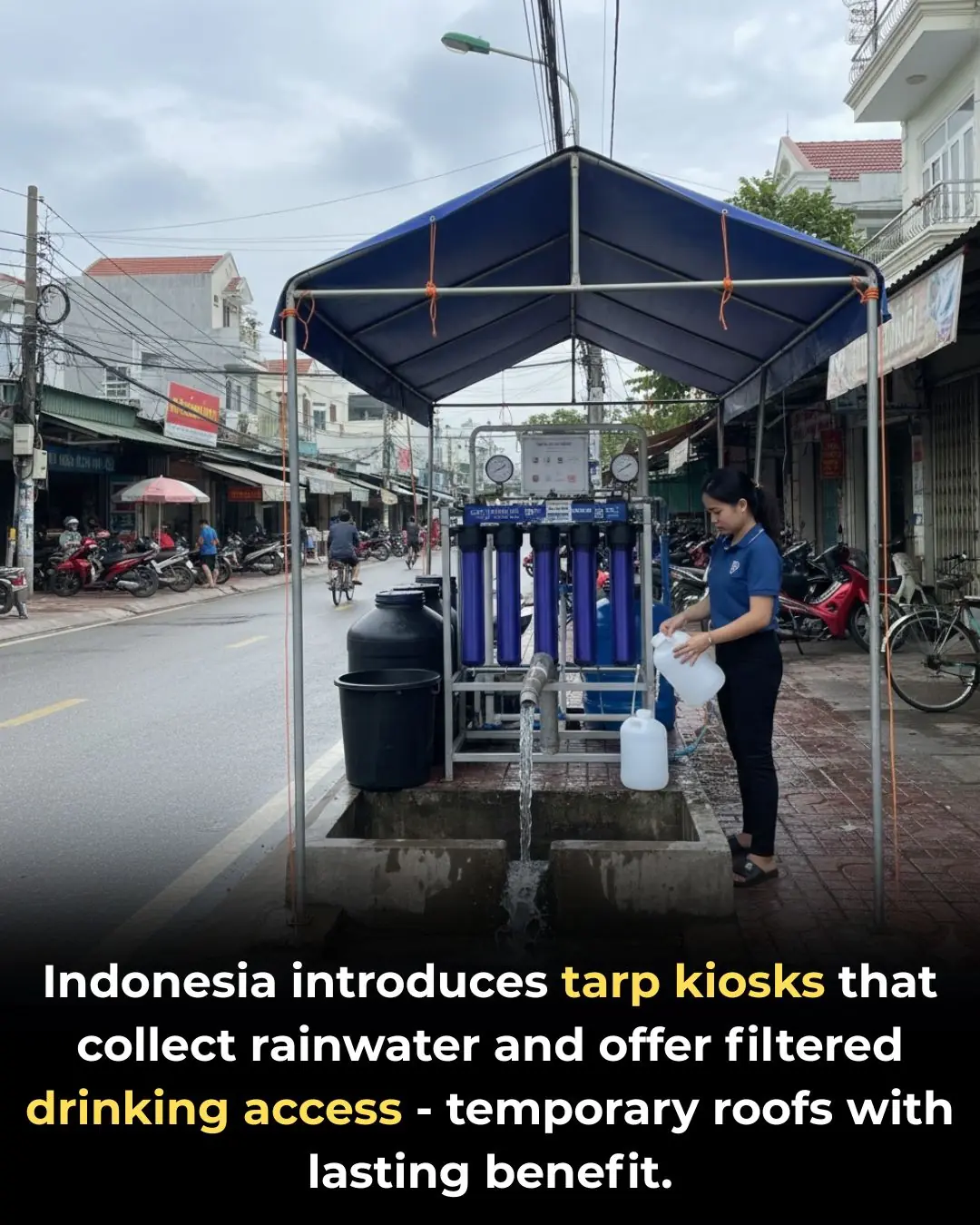
Heated Sidewalks and Cold Mornings: Iceland’s Quiet Revolution in Winter Comfort
In Iceland, where winter temperatures routinely dip far below freezing, even the simplest everyday moments have been thoughtfully redesigned to coexist with the harsh Arctic climate. One of the most subtle yet remarkable examples appears along busy pedestrian streets: heated sidewalks that transform the experience of waiting outside popular bakeries. These pathways create gentle corridors of warmth — often called informal “bread lines” — where customers can queue comfortably even during heavy snowfall. Instead of sinking into icy slush or shivering in the wind, people step onto a warm strip that melts snow on contact, offering a surprisingly pleasant pause in the cold.
This system is part of Iceland’s broader and highly sophisticated use of geothermal energy, a natural resource that has shaped nearly every aspect of life on the island. Geothermal heating powers homes, businesses, swimming pools, greenhouses, and extensive outdoor infrastructure. According to Iceland’s National Energy Authority (Orkustofnun), over 90% of homes are heated using geothermal systems, and major municipalities use geothermal water to keep sidewalks and streets free of ice during winter. This same technology is what allows bakery-lined walkways — often bustling in the early morning darkness of long Icelandic winters — to remain inviting and accessible.
Beneath the stone tiles, a network of pipes circulates naturally heated water drawn from geothermal wells. These pipes distribute low-intensity, steady heat that rises just enough to keep the ground above them warm and dry. The system is connected to local geothermal grids, requiring no fossil fuels and producing no visible steam, noise, or odor. The effect is understated but unmistakable: while snow settles softly across rooftops, cars, and unheated paths, the bakery queue zone remains bare, textured, and walkable.
What makes this design particularly Icelandic is its minimalism. There are no handrails, warning posts, or bright indicators highlighting the warm corridor — the environment speaks for itself. Snow outlines the edges naturally, revealing the heated strip as a dry pathway amid the white landscape. Customers often step onto it almost instinctively, recognizing the subtle rise in temperature beneath their boots. In a country known for long winter nights, these warm surfaces create pockets of comfort where people gather, talk, and wait for fresh bread emerging from ovens just a few meters away.
Though seemingly small, this fusion of tradition and technology reflects a much deeper cultural philosophy. Iceland has long embraced solutions that balance environmental responsibility with everyday well-being. Heated sidewalks are not just about convenience; they demonstrate how renewable energy can quietly enhance communal life. As documented by the City of Reykjavík and reported by outlets such as BBC and National Geographic in their coverage of Iceland’s geothermal innovation, these systems reduce accidents, support walkability, and create safer urban spaces — all while using clean, sustainable energy.
Standing in these warm queue zones, one feels a sense of connection to both the land and the community. The heat rising from underground is the same geological force that shapes Iceland’s volcanoes, hot springs, and geysers. The people waiting above share a moment of warmth, not only from the bread they’re about to enjoy but also from the earth itself. It’s a quiet luxury, a small act of care built into the city’s infrastructure — proof that even in the coldest places, human comfort and environmental harmony can coexist beautifully.
News in the same category


‘Take the Underground Railroad Girl’: Karen’s Mid-Flight Meltdown Gets Porsha Williams Escorted Off — But Simon’s Cryptic Private-Jet Post Takes Over

“How Indonesia’s Tarp Kiosks Are Redefining Public Drinking Water”

“Painting the Impossible: China’s Drone Experiments Turn Cliffs into Giant Artworks”

‘Why Did You Come to This School?’: Lawsuit Says Chicago School Let 10-Year-Old Black Girl Be Called the N‑Word, Punched, and Threatened Daily—Then Blamed Her for the Disruption

Stadiums of Sanctuary: A Winter Refuge Beneath South Africa’s Grand Arenas

‘He Needs To Act Like A Professional’: Would Draymond Green Care That A Fan Called Him ‘Angel Reese’ If He Was Still Good?

O.J. Simpson Estate Selling Off Treasures to Pay Goldman $58M—You Won’t Believe What’s Up for Auction

Leading Barber App Releases New Heartwarming Campaign Highlighting the Transformative Power of a Haircut

Philadelphia’s Oldest Black Bookstore From 1950s Officially Granted Historical Marker

Deion Sanders Has Generated More Than $90M for the University of Colorado Boulder

Johns Hopkins Welcomes Second Cohort of HBCU STEM Scholars as Part of $150M Commitment

Meet The Chicago Florist Using Art Installations To Shine A Light On Blackness

Prince to Be Honored Posthumously With Lifetime Achievement Award at Grammys

What Sydney Sweeney and Tom Cruise talked about during Governor Awards: lip reader

BBC axes Davina McCall's Stranded on Honeymoon Island after just one series

Shona McGarty's ex fiancé breaks silence as she joins I'm A Celeb after split

Michael McIntyre admits never seen before moment after Tommy Fury admission

ITV Emmerdale fans 'can’t cope' after Kev Townsend’s 'nightmare' twist
News Post

‘Don’t You Guys Sleep In Trees?’: Black College Football Player Quits School Team After Suffering Racism from Teammates He Lived with

Mice ran loudly on the ceiling

Boil green bananas this way

‘Take the Underground Railroad Girl’: Karen’s Mid-Flight Meltdown Gets Porsha Williams Escorted Off — But Simon’s Cryptic Private-Jet Post Takes Over

Tips to deodorize the refrigerator

3 ways to make crispy roasted pork at home in a pan or fryer

5 Herbs Your Liver Wished You’d Start Eating More Often (Or At Least Try!)

Tips for hair treatment with okra, extremely effective against hair loss, baby hair grows bristling

This one vitamin could help stop you from waking up to pee every night

“How Indonesia’s Tarp Kiosks Are Redefining Public Drinking Water”

Just tried this and whoa

2 Simple and Effective Ways to Remove the Smell from Long-Frozen Meat

Lady had a bunch of empty old pill bottles

There’s a “Hidden Component” Under Your Washing Machine That Can Make Your Clothes Cleaner and Fresher

Wish I saw this sooner! Great tips!

Why Lung Cancer Targets Non-Smokers: The Hidden Kitchen Culprit You Might Not Know About

“Painting the Impossible: China’s Drone Experiments Turn Cliffs into Giant Artworks”

Dropping wind oil on garlic

‘Why Did You Come to This School?’: Lawsuit Says Chicago School Let 10-Year-Old Black Girl Be Called the N‑Word, Punched, and Threatened Daily—Then Blamed Her for the Disruption
